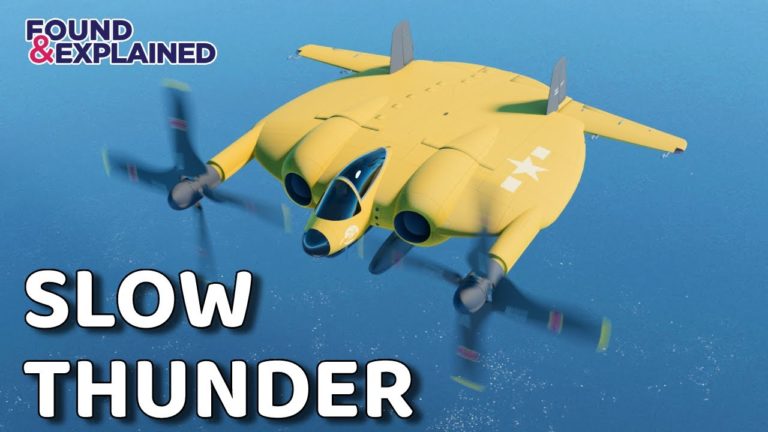The Flying Pancake | Slowest Plane Ever Made!
High speed is not everything in aviation. Sometimes, the need is for something other than having an aircraft that travels very fast.
Speed might be sacrificed so that a plane can carry more cargo or payloads, or if an aircraft needs to fly longer distances more economically. Another reason why lower speed may be preferable is for when an aircraft needs to fly low and slow.
The latter reason for a low-speed military aircraft concept was the primary driving force behind the aircraft that’ll be covered in this video.
The Vought V-173 was designed not only to be able to fly at low speed, but at a snail’s pace!
And the thinking behind its design, by one of the most innovative aircraft designers of the time, was for a wing design with an extremely low-aspect ratio.
That design ethos created an aircraft that was as flat as it was roundish in shape.
The result was what many thought looked like a giant flapjack or pancake flying through the sky – hence its quirky nickname, the ‘Flying Pancake’.
So, what went into making the Vought V-173 or ‘Flying Pancake’?
The Vought V-173 was an aircraft built during World War II. As already mentioned, central to the proof-of-concept for this craft was an extremely low-aspect ratio wing design.
This created an aircraft that was essentially one giant, flat-shaped wing, hence its pancake-like appearance.
Its most eye-catching and unique feature was its circular wing, which was a relatively small 23.3 feet or 7.1 metres in diameter.
This small wing area was meant to provide structural strength and allow the craft to have a high level of manoeuvrability.
The wing comprised a symmetrical NACA airfoil section. The NACA airfoil was developed by the National Advisory Committee for Aeronautics, or NACA, which was the predecessor to NASA.
The essential result was a mathematically-precise form of softly-cambered contouring. In theory, this type of airfoil allowed for constant, unaltered airflow over the surface.
A huge three-bladed wooden propeller was mounted at the tip of each airfoil.
These twin giant propellers would ensure that the entire aircraft was covered in constant slipstreams, thereby maximizing its aerodynamic performance in conjunction with the NACA airfoil. These prop-rotors were powered by a pair of air-cooled Continental A-80 radial engines capable of a very modest 80 horsepower.
The two four-cylinder piston engines would be housed within the fuselage on either side of the cockpit and just above the landing struts.
The wing, which was effectively also the fuselage, had a complex structure that consisted of two horizontal stabilizers and elevators, two rudders and two large elevators right at the midpoint of the fuselage.
Once again, this was also designed in order to achieve maximum aerodynamic lift and flow.
It also enabled a short take-off, as lift could be quickly generated due to the high angle of the wing area in relation to the prevailing airflow.
as such, a big plus of the V-173 was its ability to take off within 200 feet, which would be essential aboard most ships with limited runway space. Another plus was that it could also take off vertically into a 25-knot wind.
So not technically a VTOL but on some days it acted like one!
It was UATC that Zimmerman had approached with his concept after leaving NACA. Chance Vought had always had a conservative reputation regarding development, yet the division decided to invest in Zimmerman’s unique concept.
Vought had been awarded a contract by the United States Navy in May 1940 to build the V-173.
By early 1942, the United States was actively involved in World War II and so the Navy demanded that the plane be able to do very short-distance take-offs from tankers, capital ships and the decks of aircraft carriers in order to counter the threat posed by Japanese aircraft in the Pacific war arena.
The pressure was certainly on Zimmerman and his team, to deliver on this radical, new slow plane concept.
The aircraft never made it into production for the Second World War, as was its original intent. The aircraft that was also dubbed the ‘Zimmer Skimmer’ would not ever see mass production.
However, to its credit, the one full-sized Flying Pancake prototype would go on to have a total of 190 test flights with 131 hours of flight time between late 1942 and early 1947 without any major incidents or injuries to test pilots.
That’s a darn sight better statistics than most experimental prototype aircraft!
Do not forget to share your opinion with us to provide you with the best posts !




0 Comments